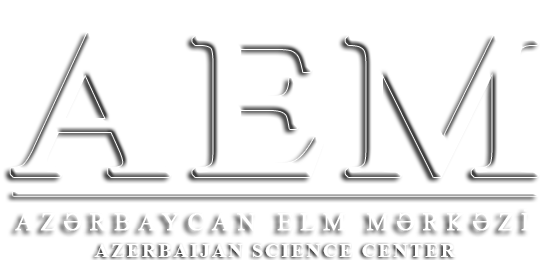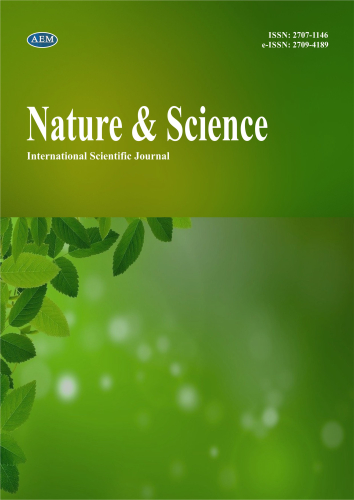Arxiv
Nature & Science 2025
DOI: 10.36719/2707-1146/03/30-34
Dursun Miri qızı Adıgözəlova
Azərbaycan Dövlət Aqrar Universiteti
dursun.adigozalova @ mail ru
Turay Fəxrəddin oğlu İsgəndərov
Gəncə, Azərbaycan
TUT İPƏKQURDUNUN SƏNAYE YEMLƏMƏLƏRİ
ÜÇÜN OPTİMAL BƏSLƏNMƏ NORMALARI
Xülasə
Məqalədə göstərilir ki, yemləmələrdə normal temperatur və nisbi nəmlik nizamlanmazsa, tut ipəkqurdunda, inkişafın düzgün getməməsi, həzm pozğunluğu, qabıqdəyişmənin və böyümənin pozulması, bir sıra xəstəliklər baş verir. Bunların qarşısını almaq üçün optimal temperatur normalarına əsasən kümxanada istilik nizamlanmalıdır. İlk I-II-III yaşlarda kümxanada orta temperatur 25,50S, IV yaşda 23,50S, V yaşda 240S olmlıdır.
İlk I-II-III yaşlarda kümxanada orta nisbi nəmlik 70%, IV yaşda 70%, V yaşda 65% olması normaldır. Barama sarıma dövründə temperatur və nəmlik normada olmazsa barama sarıma pozulur, bu da məhsul itkisinə səbəb olur. Barama sarıma dövründə normal temperatur 23,50S, normal nisbi nəmlik 65% olmalıdır.
Tut ipəkqurdunun məhsuldarlığına təsir edən əsas amillərdən biri də müxtəlif yaşlarda sahə normalarının düzgün nizamlanmasıdır. Əgər yaşa müvafiq sahə yaradılmazsa, nəticədə xəstəliklər baş verər, qurdlar normal yem ala bilməzlər. Müxtəlif yaşlarda normal sahə vahidləri (1 qutu qurd üçün) bunlar təyin olunmuşdur: I yaş- 2,5 m2, II yaş- 6-7 m2, III yaş- 15-17 m2, IV yaş- 30-35 m2, V yaş- 55-60 m2.
Kümxanada yemləmə zamanı zərərli qazların miqdarı, hava cərəyanının sürəti normal olmalıdır. Tut ipəkqurdunun tırtıllarına ammonyak, hidrogen-sulfid, karbon qazının artıqlığı öldürücü təsir göstərir. Ona görə də yemləmə zamanı tez-tez kümxananın havası dəyişilməlidir.
Hava cərəyanının sürətli olması və ya heç olmaması tut ipəkqurdu üçün zərərlidir. Tut ipəkqurdu üçün yemləmələr zamanı hava cərəyanının sürətlinin 0,1 m/san olması məqsədəmüvafiqdir.
Təyin olunmuş normalarla tut ipəkqurdları bəslənildikdə baramaların bioloji və texnoloji göstəriciləri yüksək olur.
Açar sözlər: Bombyxi mori, barama, ipək, temperarur, nisbi nəmlik
Optimum silkworm feeding rates
Summary
Summary
The article notes that non-regulation of temperature and relative humidity in silkworm feeds can lead to malnutrition, digestive disorders, edema and inhibition of growth, as well as to a number of diseases. To avoid this, the heat in the greenhouse should be adjusted according to optimal temperature norms. In the first years I-II-III the average temperature in the greenhouse is 25.5° C, in IV-23.5 ° C, in V-24 ° C.
Normal relative humidity should be adjusted during feeding in the greenhouse to avoid the above. In the first I-II-III years it is normal when the relative humidity in the greenhouse is 70%, in the IV age 70% and in the V age 65%. If the temperature and humidity are not in the normal range during the cocoon transition process, the turnover breaks, resulting in loss of product. The normal temperature during the cocoon transition process should be 23.50 C and the relative humidity should be 65%.
One of the main factors affecting the yield of silkworms is the correct regulation of field norms at different ages. If an age-appropriate area is not created, the silkworm becomes ill, leading to malnutrition. Normal field units (per 1 box of silkworms) were assigned at different ages: I year-2.5 m2, II year 6-7 m2, III year 15-17 m2, IV year 30-35 m2, V year 55-60 m2.
The amount of greenhouse gases, the flow rate and the volume of air should be normal during feeding in the greenhouse. Therefore, the greenhouse air must be changed frequently during feeding. The presence of toxic gases, such as ammonia, hydrogen sulfide, is unacceptable.
The speed or lack of airflow is harmful to the silkworm. During feeding, the airflow rate is 0.1 m/s.
When feeding of silkworms is applying in accordance with established norms, biological and technological indicators of silkworms are high.
Key words: Bombyxi mori, silk, temperature, relative humidity
Baxış: 1035

